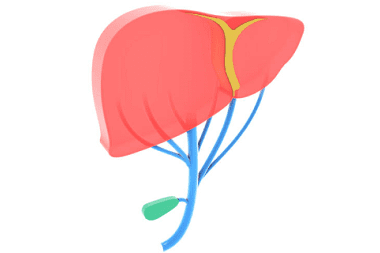Digestive system >>>> Biliary dyskinesia - causes and signs
Biliary dyskinesia - causes and signs.

Biliary dyskinesia is a dysfunction of the gallbladder and / or bile ducts, which makes it difficult for bile to drain into the duodenum. The reasons for the development of such disorders can be associated with both pathologies of the gallbladder, bile ducts, gallbladder sphincter, and with autonomic disorders, psycho - emotional instability, neuroses.
The violation of the evacuation functions of the biliary tract may be based on:
- Decreased sensitivity of receptors involved in the contraction and relaxation of the muscles of the gallbladder;
- Disturbances in the production of hormones that regulate the contractile functions of the gallbladder;
- Inflammatory processes in the gallbladder, biliary tract, causing dysfunction of the biliary system;
- Infectious diseases that disrupt the evacuation capabilities of the gallbladder and / or biliary tract;
- Cholelithiasis, causing a violation of the outflow of bile;
- Pathological changes in the structure of the ducts and / or gallbladder;
- Concomitant systemic diseases that cause an imbalance in the endocrine and nervous regulation of the outflow of bile along the biliary tract.

Dysfunction of the biliary tract is characterized by pain in the right hypochondrium (paroxysmal dull or acute pain). The pain can radiate to the right side of the back, to the right shoulder blade, forearm. Painful sensations occur before meals, after meals or at night, may be accompanied by nausea, urge to vomit, dyspeptic disorders.
With the development of dyskinesia of the biliary tract in a hypokinetic type (lowering the tone of the gallbladder and its contractile functions), pain lasts for several days, sometimes constantly. Pain occurs before eating, and after eating, subside.
With the development of biliary dyskinesia of the hyperkinetic type (increased tone of the gallbladder and its contractile functions), pain is short-term, but periodically arising for several months. Pain can resemble the nature of the course of hepatic colic or an attack of angina pectoris, accompanied by nausea, vomiting, a feeling of heaviness or distention in the right hypochondrium, dizziness, a feeling of general weakness, intestinal disorders. The pain symptom develops after eating or sometime after eating.
Dysfunction of the biliary tract can be complicated by increased physical activity during exercise or sports, irregular nutrition, food mainly fried and smoked, foods with a high fat content, prolonged stress.

Read

Read



























